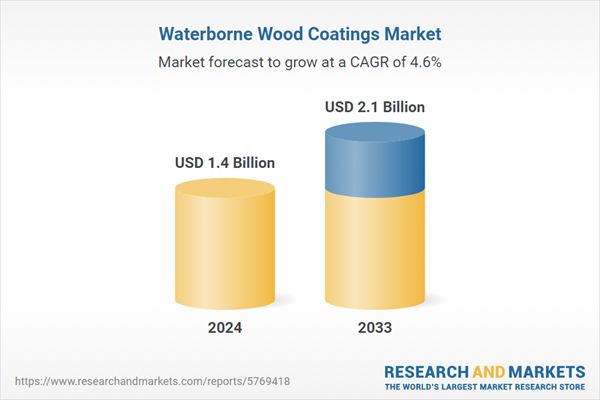Wood coatings are generally created by combining various layers of shellac, drying oil, lacquer, varnish, etc. where every layer is followed by sanding. Whereas, on the contrary, waterborne wood coatings are made from a wide range of resins which include acrylic, polyester, polyurethane, fluoropolymer, waterborne powder, etc. Water is added in these coatings to enable the resin to get dispersed easily.
These coatings are applied on the wood surface to protect and enhance its appearance. The high-water content of these coatings makes them easy to apply and environment-friendly as well. The consistency and the composition of the waterborne coatings vary and different solvents can be added to it. These coatings are often applied on furniture items such as tables, chairs, shelves, decorative wooden items, etc.
The market for waterborne wood coatings is currently exhibiting a continuous growth. Catalyzed by growing urbanization in emerging economies across the Asia Pacific, Latin America, and Eastern Europe, there has been a significant rise in the demand of waterborne wood coatings. Growing urbanization has triggered a rise in the residential, commercial, and industrial infrastructure, creating a positive impact on the demand of wooden products in these regions. Moreover, rising production of wooden artefacts and decorative items catalyzed by the growth of the global décor industry has also been driving the demand of these coatings.
Additionally, waterborne wood coating offers numerous advantages compared to its substitutes. This includes robustness, stain resistance, corrosion resistance, flexibility, etc. Other factors driving the demand of waterborne wood coating include government regulations to reduce VOC (volatile organic compounds) emissions, product innovation, rising wood reuse, etc.
Key Market Segmentation:
The research provides an analysis of the key trends in each sub-segment of the global waterborne wood coatings market report, along with forecasts at the global and regional level from 2025-2033. Our report has categorized the market based on application.Breakup by Application:
- Furniture
- Decking
- Joinery
- Siding
- Flooring
- Others
Breakup by Region:
- Asia Pacific
- North America
- Europe
- Middle East and Africa
- Latin America
Competitive Landscape:
The report has also analysed the competitive landscape of the market with some of the key players being BASF SE, Akzo Nobel Hilden GmbH, Axalta Coating Systems, LLC, Benjamin Moore & Co. (Berkshire Hathaway Inc.), Diamond Vogel, Helios TBLUS d.o.o (Kansai Paint Co.,Ltd.), PPG Industries Inc., Teknos Group Oy, The Dow Chemical Company and The Sherwin-Williams Company.Key Questions Answered in This Report
- How big is the waterborne wood coatings market?
- What is the expected growth rate of the global waterborne wood coatings market during 2025-2033?
- What are the key factors driving the global waterborne wood coatings market?
- What has been the impact of COVID-19 on the global waterborne wood coatings market?
- What is the breakup of the global waterborne wood coatings market based on the application?
- What are the key regions in the global waterborne wood coatings market?
Table of Contents
Companies Mentioned
- BASF SE
- Akzo Nobel Hilden GmbH
- Axalta Coating Systems LLC
- Benjamin Moore & Co. (Berkshire Hathaway Inc.)
- Diamond Vogel
- Helios TBLUS d.o.o (Kansai Paint Co. Ltd.)
- PPG Industries Inc.
- Teknos Group Oy
- The Dow Chemical Company
- The Sherwin-Williams Company
Table Information
| Report Attribute | Details |
|---|---|
| No. of Pages | 138 |
| Published | June 2025 |
| Forecast Period | 2024 - 2033 |
| Estimated Market Value ( USD | $ 1.4 Billion |
| Forecasted Market Value ( USD | $ 2.1 Billion |
| Compound Annual Growth Rate | 4.6% |
| Regions Covered | Global |
| No. of Companies Mentioned | 10 |









